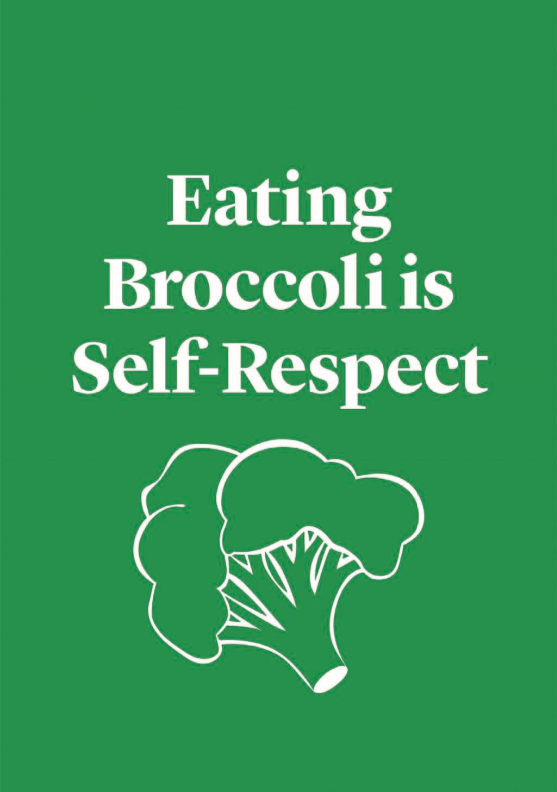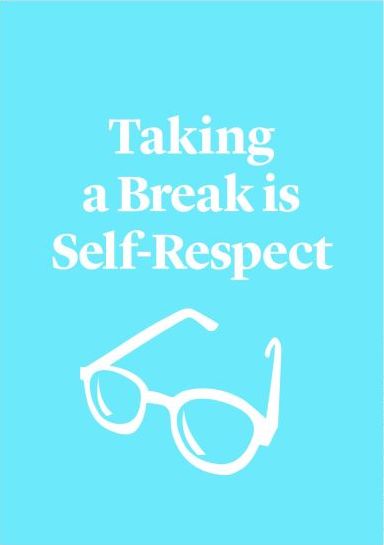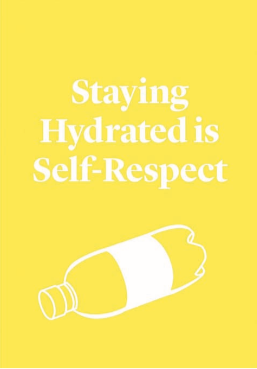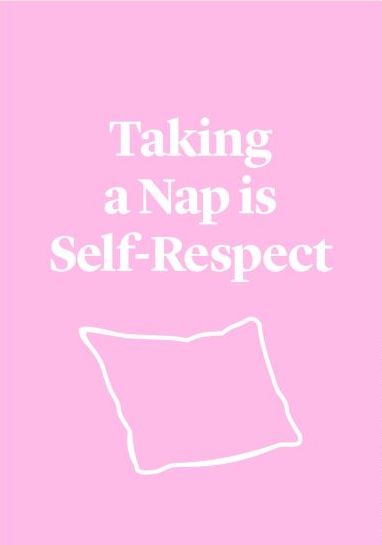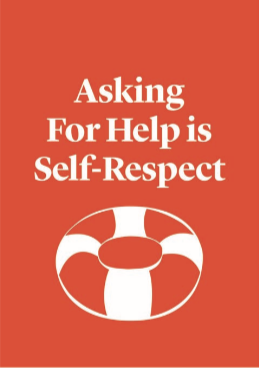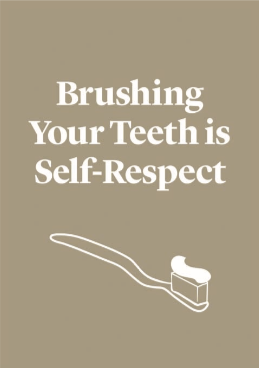The Principles of Participatory Art
Share:
This essay originally appeared in ART PAPERS July/August 2016.
All images: Marina Kitchen and Abby West, from the Art of Public Health, 2012 [courtesy of the artists, Yale School of Public Health, and Yale School of Art]
***
When Marina Abramović staged An Artist’s Life Manifesto for the Museum of Contemporary Art, Los Angeles gala in 2011, she recruited dancers to kneel beneath banquet tables designed with holes in the center so that the performers’ heads could pop through, becoming living centerpieces able to make eye contact with the diners. It is a simple work that uses people as its primary medium, yet it stirred controversy—specifically accusations that Abramović was exploiting others. Artist Yvonne Rainer called the work a “grotesque spectacle,” and art historian Claire Bishop criticized it for reducing its participants to objects that never “become more” than mere table decorations. Abramović’s “participatory” art, true to form, had elicited both aesthetic and ethical criticism.1
Ethical criticisms continue to be levied at participatory artwork. Consider the very recent Gentrifiers Anonymous, a May 2016 event co-produced by the Brooklyn Hi-Art Machine (BHAM!), as well as by Jennifer Dalton and William Powhida’s public art project Month2Month. This work gathered artists, performers, and activists for a meeting in New York’s Chelsea neighborhood to “publicly confess their own sins of gentrification,” and address their problems in a “12-step” model. Although its participants professed to traffic in ethical criticism, an online write-up on Hyperallergic questioned the efficacy of Gentrifiers Anonymous, suggesting it was a superficial, self-congratulatory exercise that failed to get at the deeper causes of gentrification (such as wealth amassed “through chattel slavery that economically founded the nation and set up a system of legally protected, systematic inequality”).
The ever-present ethical dimension of participatory art is one of its most striking features, but also its most poorly understood. Participatory art, as we have seen, may range in form from works involving human table centerpieces to community meetings, and it is because of these works’ irreducible social dimension—that is, because of the relationships they foster between two or more people—that they raise specific ethical questions about interpersonal and social conduct. It is often on ethical grounds that participatory art is either applauded or denounced by critics, which is to say that in criticism today, participatory art that is ethically upstanding is “good” art, whereas participatory art that is unethical is “bad” art.
This presumed direct correlation between the value of an artwork “as art” and its value as an ethical gesture raises some interesting questions about the underlying ideology behind work of this sort. The fact that art involving people other than the artist can be criticized for being coercive, for not respecting the participants, or for not properly responding to the issues it purports to address, and may be measured by its ability to do good or harm in the world, tells us something about our contemporary approach to art in general. It tells us that art making is consistent with the present moral ideals of the prevailing neoliberal urban society. Art making both polices and is policed by the borders of propriety apposite to this social order. Participatory work in particular highlights this function, as ethics helps constitute its interpretation.
The critical language used to talk about the ethics of such artworks is at best reactionary, at worst non-existent. However, the same neoliberal morality at play in the art world has already been developed in other institutional sectors, as has that morality’s critical vocabulary. One of these institutions is the biomedical industry, wherein for the last 50 years there has been a concerted effort to describe and defend the underlying ethical principles of the industrialized world, and to apply them to the doctor-patient relationship. The guiding principles of contemporary bioethics, articulated by ethical philosophers, can be usefully applied to contemporary participatory art to more accurately describe the sympathetic ethical framework guiding the production and criticism of art in general.
Since the end of WWII there has been an ongoing international effort to establish ethical principles for medical experimentation on humans. These efforts have developed in tandem with the discourse on human rights but trace their specific origin back to the trials of Nazi doctors in Nuremberg. In these trials, prosecutors sought to address the brutal use of concentration camp inmates in medical experimentation, and in doing so led to the enforcement of new standards for doctor-patient relationships globally. In 1964 a comprehensive document known as the Declaration of Helsinki was drawn up by the World Medical Association, with a goal to make these ideas internationally binding. In the 1970s ethicists in philosophy departments began to seriously engage with this topic, and one of the most important texts to be published in the early days of the development of bioethics was Tom Beauchamp and James Childress’ 1979 Principles of Biomedical Ethics.
This book, and its subsequent editions, established a set of five core principles for the doctor-patient relationship: autonomy, beneficence, nonmaleficence, justice, and truth telling. These principles are intended to be used descriptively to account for ethical conflicts in the biomedical industry, and also to evaluate specific cases. These principles are now a standard part of the discussion of applied bioethics among philosophers, but more importantly, they are also part of the training of doctors and research physicians in many countries. In America, for example, in order to receive clearance to conduct human trials doctors must pass periodic exams that test their recognition of these principles.
Autonomy is the principle that privileges the decision-making capacities of an individual patient or test subject. It extends to the need for doctors to get informed consent from their patient before any medical intervention is made, and it upholds the right of patients to refuse treatment. Beneficence is the principle that emphasizes the need to positively benefit a patient, and that any biomedical action should be weighed against possible risks. Nonmaleficence is the principle that asserts that health care professionals should avoid or maximally reduce the harm done to patients in the course of treatment. The principle of justice considers the overall social context of the doctor-patient relationship; it promotes the equitable distribution of benefits, risks, and costs to all patients—in other words, the idea that similar patients should be treated in a similar manner. Last is the principle of truth telling, which upholds doctors’ duty to provide all relevant information to patients and not to withhold anything from them.2
Although I began this list with the principle of autonomy, the list has no ranking order. In fact, different situations may or may not engage all of these principles; the principles furthermore interact and at times present contradictions. Beneficence might conflict with respect for autonomy, for instance, if a patient were to refuse long-term beneficial treatment out of a fear of short-term pain—say, by refusing a vaccine injection because he or she fears needles. These principles don’t necessarily map out a solution to such conflicts, but they do give us a strong descriptive vocabulary to discuss cases in which conflict may arise.
Beauchamp and Childress’ principles guide the decisions of doctors as they relate to patients, but what would happen if we thought about these very same principles being applied to the artist-participant relationship in contemporary participatory art? Many of these ideas are already at work in the production and criticism of participatory art; making these connections explicit will provide a more precise way of describing the ethical dimensions and requirements of these artworks. Rewritten to fit an art context, adapting the doctor-patient relationship into an artist participant relationship, Beauchamp and Childress’ principles might look like this:
Principles of Participatory Art
I. Autonomy: This principle privileges the decision-making capacities of individual participants. It extends to the need for artists to get informed consent from their participants before any artistic intervention is made and upholds the right of participants to refuse involvement.
II. Beneficence: This principle emphasizes the need to positively benefit a participant, and that any artistic action should be weighed against possible risks.
III. Nonmaleficence: This principle asserts that artists should avoid or eliminate discomfort to participants.
IV. Justice: This principle promotes the equitable treatment of all possible participants.
V. Truth Telling: This principle upholds artists’ responsibility to provide relevant information and not to withhold information about their artwork, in order to allow participants to make informed decisions about their involvement in the work.
These principles are consistent with current approaches to ethics and human rights, and as mentioned above, a similar kind of ethical framework is already at work in the art world, even though it has not been made explicit. By appropriating the vocabulary of bioethics we establish a working language with which to discuss ethics in even the most experimental artworks.
Autonomy is one of the most important of the principles of bioethics, and is often at the heart of many criticisms of participatory art. When an artist is accused of exploitation or coercion, the actual criticism is that the artist did not respect the autonomy of the participant/s. In 2003, for a work called Freakstars 3000, German artist Christoph Schlingensief staged an American Idol-style talent show in an assisted living home, where mentally disabled participants competed to become members of a band. The competition was recorded and edited into a documentary-style film. Considering this work in light of the bioethical principles proposed, Freakstars raises concerns about the participants’ ability to provide informed consent to be part of an artwork. As scholar Tara Forrest has pointed out, “the view … that Schlingensief is simply making fun of the disabled contestants … is one that was well represented in … the media.” The bioethical vocabulary helps us understand that the precise kind of norm violation at issue here is one in which autonomy and informed consent are at stake.
Artists who work with other participants while privileging beneficence often fall under the heading of “social practice,” in that their art is intended to have its own socially beneficial effect. Tania Bruguera’s Immigrant Movement International (2011–ongoing), for example, was made in collaboration with the Queens Museum to function a community center where immigrants in the Corona neighborhood could gather and find resources, from legal advice to music lessons for children. Participatory artists who work in this way intend for their artistic output to be judged for its promotion of the principle of beneficence. In this critical framework, participatory art that does not adequately do so might be accused of being lacking.
The explicit causing of pain is arguably a boundary rarely crossed by contemporary artists; nonmaleficence nevertheless applies in the context of participatory art. Consider Santiago Sierra’s 160 cm Line Tattooed on 4 People El Gallo Arte Contemporáneo. Salamanca, Spain. December (2000). As his title partially explains, Sierra drew a single line across the backs of four prostitutes, who were paid for their participation in an amount equivalent to the street cost of a single shot of heroin. Pain and harm come into play at many levels of this work: there is the short-term physical pain of the tattoo, and the long-term negative risks of being associated with prostitution and heroin use. The perceived audacity and indecency of this work and ones like it are proportional to how much the work violates the status quo principle of nonmaleficence.
Justice, in this context, often overlaps with concerns for beneficence. This principle incorporates the idea that access to socially engaged art should be equally available to any participant or member of society. When Nicolas Bourriaud wrote Relational Aesthetics in 1998 he coined the term “microtopia” to discuss the impact of the work of artists such as Rirkrit Tiravanija. When Tiravanija prepared and served Thai curry to visitors at New York’s 303 Gallery for a work called Untitled (Free) (1992), he also created a microtopia; for the artist and his diners the space contextualized by the artwork became an anticapitalist zone of free exchange and open communication. This environment was considered utopian, but not on a large scale, hence Bourriaud’s term. Yet because these kinds of “safe spaces” for discussion are already available to the educated, privileged population of the global art world, Bourriaud’s claims that such a gathering could truly free participants from global capitalism are questionable—the market-driven art world instead being the implicit foundation that makes microtopias possible. As such, Untitled (Free) can be criticized for violating the principle of justice because, despite its proclaimed commitment to that very principle, of the fundamental exclusivity of the gallery environment.
The relationship of the principle of truth telling to participatory art is perhaps the most nuanced. Artists may certainly fail to adequately explain their project to participants, but this is different from knowingly deceiving them or using a lie as a constitutive part of the work. Instead, artists often explain what they are doing in participatory art before, during, and after the work is being conducted; such explanation might take the form of a manifesto, a website, or a community meeting devoted to explaining a project. This explanatory component to participatory art does not seem trivial but rather unalienable: there is a deep didactic ethos in the genre. Suzanne Lacy’s Between the Door and the Street (2013) illustrates the place of explanation in the artist-participant relationship. In this work Lacy convened various women’s groups and asked them to hold their meetings on separate stoops lining a single closed-off residential street in Brooklyn, thus making a public display of what are typically closed, small-group social interactions. The public was allowed to walk the street and observe the meetings as they happened; as the artist, Lacy meanwhile took on the role of explaining this idea both to the participants involved, by individually soliciting them, and to the public at large, through press before and after the event. If this highly intentional expression were to be absent from such works, they would be part of a different mode of making: con artistry.
Going through this exercise of applying bioethical principles to the artist-participant relationship in contemporary art should not be seen as a prescriptive effort. To suggest deploying these terms is by no means to say that artists should stop pushing limits and obey only a set of presently prevailing principles. Rather, if these principles already define possible ethical violations in art, they also delineate points at which ethical limits can be pushed. The value of Beauchamp and Childress’ bioethical language is descriptive, but this description can be deployed as part of a program to identify and challenge the authority of this existing ethical order and others.
References
| ↑1 | Art that involves interpersonal relations between people has attracted increased institutional support in recent decades. Because work of this sort is not object based and has occasionally been used as a mode of protest, it has in previous decades been perceived as being fundamentally anti-institutional. This, however, is no longer a strong claim, since many of the most prominent art institutions are now supporting and collecting participatory art, including the Museum of Modern Art, the Walker, and the Tate. During this time, a lot of conceptual energy has been spent on defining the nature of the relationship between artist and participant. Some artists have opted instead to call them collaborators, guests, or co-makers—a game of semantics that might be viewed as an expression of anxiety over the ambiguous ethical relationship between artists making “participatory art” and their human subjects. Although I acknowledge that work of this sort has been given many labels, I will for ease use only the term “participatory art” in this essay. |
|---|---|
| ↑2 | In previous generations it was seen as harmful, for example, to tell surgical patients the details of their surgery based upon the assumption it would cause undue stress. This approach has been mostly disputed, and the need for truth telling is seen as integral to support informed consent. |
